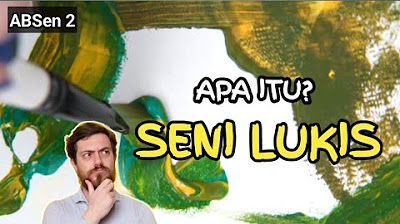Step by Step Wall Panelling Procedure | Framing | Laminate, Veneer, Louvers, Glass Panelling
Summary
TLDRIn this video, the host Abhishek Singh from the YouTube channel 'Aabhi Welcome' introduces a simple three-step process for wall painting that's easy for anyone, whether a designer, contractor, or DIY enthusiast. The video explains the importance of understanding the correct procedure for wall painting, which varies with different materials like plywood framing, covering, and direct application options. It emphasizes the need for proper leveling of walls and the use of tools like spirit levels and plumb levels. The host also discusses various materials available for wall decoration, including laminates, PVC panels, and the direct application of certain materials without the need for framing. The video is informative and aims to guide viewers through the wall painting process, ensuring a smooth and professional finish.
Takeaways
- 😀 The video provides a simple 3-step process for wall painting, suitable for designers, contractors, and clients.
- 🛠️ The execution of wall painting depends on the material used, which could range from PVC panels to laminates and various paints.
- 📏 Leveling the wall is crucial before painting, and tools like spirit levels and plumb levels are used to ensure a smooth surface.
- 🔨 Framing is an important step in wall painting, which may include first, second, and finishing material pasting depending on the material's requirements.
- 📌 Screws should be used carefully during framing to avoid damaging the surface and to ensure they do not protrude, which could affect the final look.
- 🛑 It's essential to check for wall indentations before framing; if indentations are more than 3 to 4mm, first framing is necessary.
- 🔩 Different types of boards can be used for framing, such as plywood, which is commonly used in interiors, and sometimes hard boards like blockboard and chipboard.
- 💡 The video emphasizes the importance of creativity in wall design, allowing for various material combinations like laminate with mirror or wallpaper.
- 📹 The presenter, Abhishek Singh, also mentions other videos detailing different wall painting materials and their processes in detail.
- ⏰ The video concludes with a reminder that the process can vary based on the material and the desired outcome, and encourages viewers to share their thoughts and questions in the comments.
Q & A
What is the main topic of the video?
-The main topic of the video is a detailed procedure for wall painting, focusing on various materials and techniques.
Who is the intended audience for the video?
-The video is intended for interior designers, contractors, and anyone involved in wall decoration.
What are the three steps mentioned in the video for wall painting?
-The three steps mentioned are framing, second framing (if necessary), and finishing material pasting.
What is the purpose of the first framing in wall painting?
-The first framing is done to level the wall and provide a smooth surface for the application of various wall materials.
Why might someone skip the first framing step?
-One might skip the first framing if the wall has less than 3mm to 4mm undulation, as it is already smooth enough for direct application of wall materials.
What materials are used for the first framing?
-Materials used for the first framing include wood strips, aluminum tubes, and plywood strips, typically 3 inches by 18mm in size.
What is the importance of checking horizontal and vertical levels during the first framing?
-Checking horizontal and vertical levels ensures that the strips are aligned correctly, providing a straight and even base for further wall treatments.
What is the role of screws in the second framing process?
-Screws are used to attach the second layer of framing to the first, ensuring a tight and secure fit that will support the finishing materials.
Can you directly paste some wall materials onto the wall without framing?
-Yes, some materials like PVC panels can be directly pasted onto the wall after plastering, without the need for framing.
What are some examples of finishing materials discussed in the video?
-Finishing materials discussed include laminates, charcoal sheets, glass painting, molding, and paint.
What is the significance of the 'spirit level' tool mentioned in the video?
-The spirit level is used to check the horizontal and vertical alignment of the framing to ensure a level surface for wall decoration.
Outlines

This section is available to paid users only. Please upgrade to access this part.
Upgrade NowMindmap

This section is available to paid users only. Please upgrade to access this part.
Upgrade NowKeywords

This section is available to paid users only. Please upgrade to access this part.
Upgrade NowHighlights

This section is available to paid users only. Please upgrade to access this part.
Upgrade NowTranscripts

This section is available to paid users only. Please upgrade to access this part.
Upgrade NowBrowse More Related Video

Orderan Langka ! Ampe 3Jt ... Bikin Papan Nama Ruangan / Kelas Untuk SMP Lab

SQL for beginners: SELECT statement

RESEP NASI GORENG KENCUR TERENAK BIKIN NAGIH

RUDY CHOIRUDIN | GODOGAN EMPON - EMPON BUGAR ~ RESEP JAMU NENEK MOYANG UNTUK IMUNITAS

Armadio a muro fai da te con ante IKEA pax

PENGERTIAN, ALIRAN, TEKNIK, DAN PROSEDUR SENI LUKIS || Seni Budaya Kelas 9 "Ayo Belajar SENi eps.2"
5.0 / 5 (0 votes)